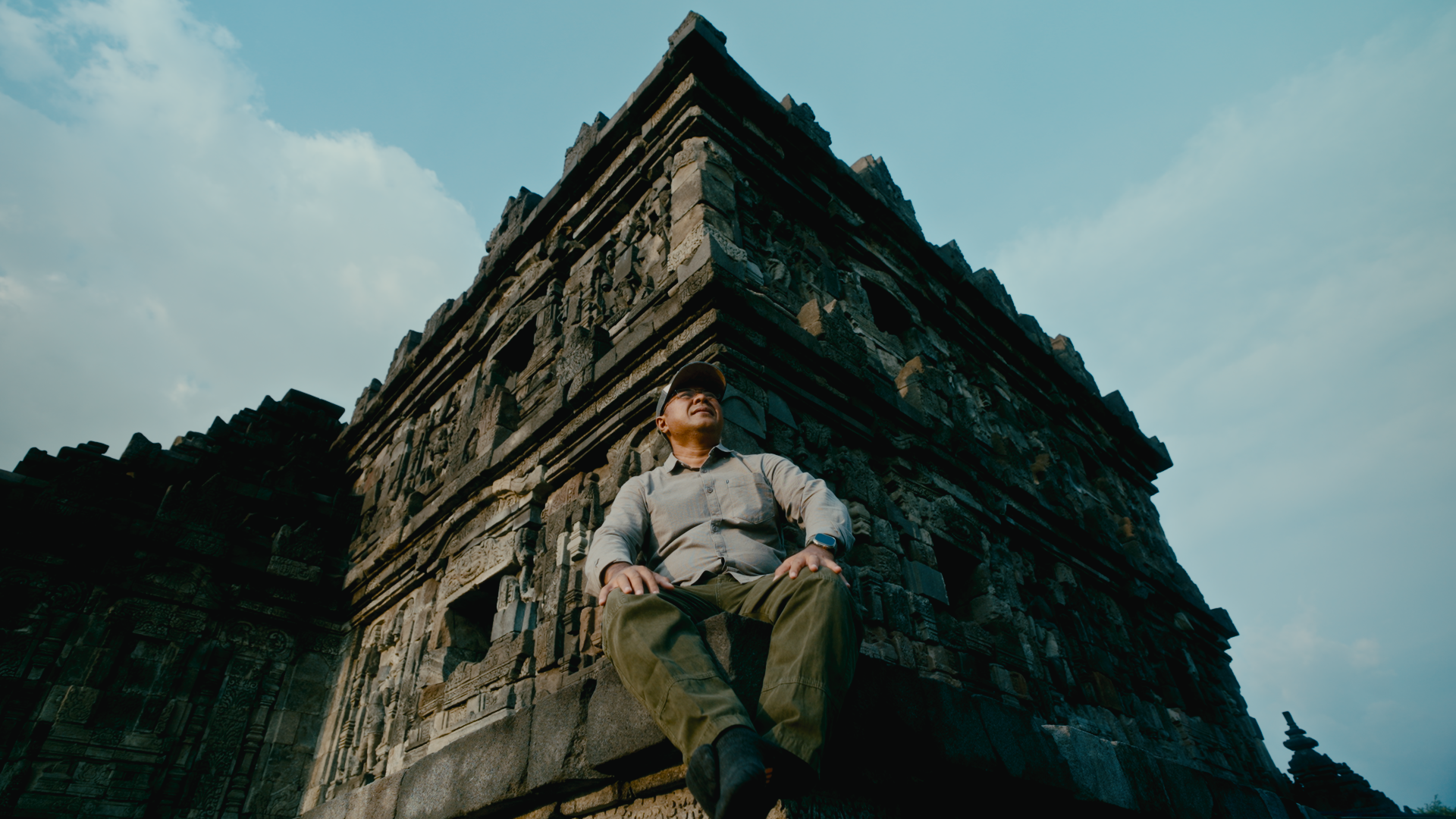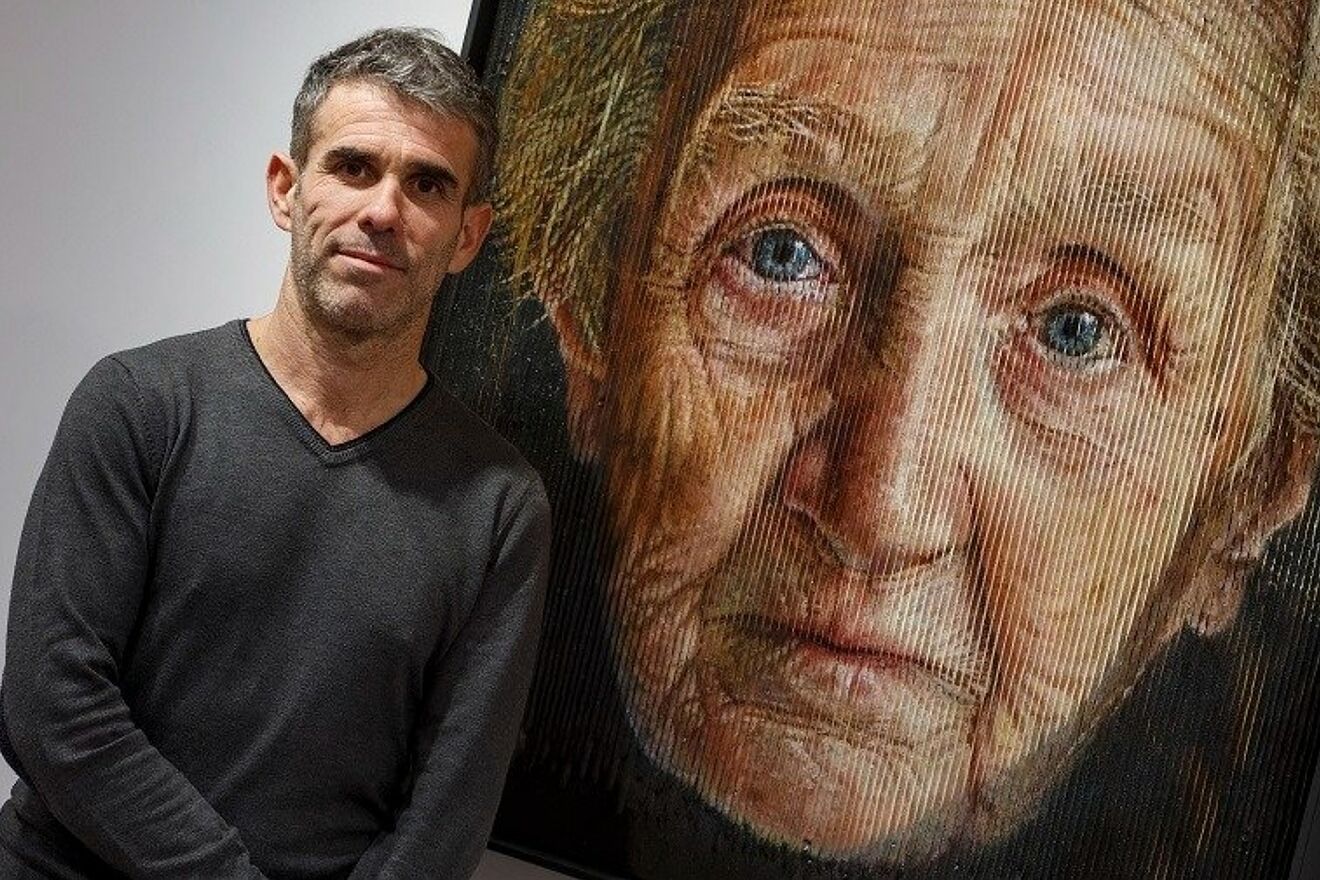
Art Guide
In full bloom: Annalù’s artistic splendour blossoms at Ode To Art
The Italian artist explores nature’s metamorphosis, evolution, and other thought-provoking themes in ‘Blooming’, her first solo exhibition in Singapore
By Tatler Singapore, Ode To Art
Dusk is falling at the Singapore Botanic Gardens as Annalù wanders about the idyllic Sundial Garden. Just an hour earlier, a late afternoon shower threatens to put a damper on the day but it quickly dissipates, leaving behind a shimmering veil of droplets on the lush foliage.
Bathed in a warm glow of the fading sunlight, Annalù cuts an ethereal figure; a modern-day nymph enchanted and inspired by the vibrant tapestry of flora that surround her. Strolling over to the National Orchid Garden, she takes her time examining every flower closely as her fingers caress the delicate petals. Despite being thousands of kilometres away from her native hometown of Venice, Italy, the artist is in her element. “I am the daughter of my land, which is made up of the sea, the lagoon and nature,” she muses wistfully, “The micro and macro cosmos are an inexhaustible source of inspiration for me.”

To describe Annalù’s repertoire of work as fantastical and thought-provoking would be an understatement. A multi-disciplinary sculptor of “dreamlike forms suspended in dynamic balance”, her larger-than-life creations transcend conventional boundaries. From whimsical installations that mimic the delicate flutter of butterfly wings to enchanting sculptures that capture the essence of blooming life, each one of Annalù’s pieces aims to challenge perceptions, arouse introspection and evoke a sense of wonder. “I consider everything that is strongly evocative and projected towards dreams as poetic. This is the direction I try to give to my work, which always travels on the threshold of dreams, leaving room for the collective imagination.”


Bathed in a warm glow of the fading sunlight, Annalù cuts an ethereal figure; a modern-day nymph enchanted and inspired by the vibrant tapestry of flora that surround her. Strolling over to the National Orchid Garden, she takes her time examining every flower closely as her fingers caress the delicate petals. Despite being thousands of kilometres away from her native hometown of Venice, Italy, the artist is in her element. “I am the daughter of my land, which is made up of the sea, the lagoon and nature,” she muses wistfully, “The micro and macro cosmos are an inexhaustible source of inspiration for me.”

To describe Annalù’s repertoire of work as fantastical and thought-provoking would be an understatement. A multi-disciplinary sculptor of “dreamlike forms suspended in dynamic balance”, her larger-than-life creations transcend conventional boundaries. From whimsical installations that mimic the delicate flutter of butterfly wings to enchanting sculptures that capture the essence of blooming life, each one of Annalù’s pieces aims to challenge perceptions, arouse introspection and evoke a sense of wonder. “I consider everything that is strongly evocative and projected towards dreams as poetic. This is the direction I try to give to my work, which always travels on the threshold of dreams, leaving room for the collective imagination.”
Annalù’s profound connection with nature is perhaps most evident in ‘Blooming’, her first solo exhibition in Singapore at Ode To Art, which will feature nine new pieces of her iconic mandala designs. The name ‘Blooming’ says it all; it stems from the concept of extreme flowering. “The inspiration for this exhibition came by studying the opening movement of flowers: their development of birth, growth, decomposition and reconstruction,” she explains.

There’s meaning, of course, beyond the visually arresting nature of her sculptures. The whirlwinds of exploding butterflies, unfurling of petals and splashes of water captured in perpetual motion beckon the observer to embark on a voyage through time and reflect on the need for a spiritual rebirth. “It is especially important in dark moments like the one we are currently living in,” she notes. “That is why the sculptures are strongly lush and linked to the concept of expansion, development and metamorphosis."
Gallerist Jazz Chong, founder and director of Ode To Art echoes the sentiment. A long-time admirer of Annalù's work, Chong was drawn to the profound representation of evolution in each of the artist’s pieces. “Annalù’s creations go beyond just visual appeal. They are beautiful but they also have a transformative impact on how one perceives time,” she notes. “Her art shows a deep understanding of life, birth and evolution.”


Chong is particularly drawn to Annalù’s unwavering exploration and inventive experimentation within her chosen artistic mediums; harnessing a variety of materials such as Murano glass, resin, paper, ink, and ash to bring her works of art to life. Annalù credits this to her academic studies in Venice. “I had the great fortune of not having a classical education but instead one linked to experimentation,” she recalls. “This is how my approach to three-dimensionality began, using all possible materials. I strongly believe that this has preserved the freshest and most unpredictable part of my work."

In each observer, the artist hopes to inspire a moment of introspection and reflection on humans’ role within the natural space–particularly, a sense of sacredness. She explains: “I want my viewer to look at the present object but imagine the future. Through my work, I would like to leave the memory of a new sculpture that highlights a living nature, becoming, at the same time, an absolute form.”
Gallerist Jazz Chong, founder and director of Ode To Art echoes the sentiment. A long-time admirer of Annalù's work, Chong was drawn to the profound representation of evolution in each of the artist’s pieces. “Annalù’s creations go beyond just visual appeal. They are beautiful but they also have a transformative impact on how one perceives time,” she notes. “Her art shows a deep understanding of life, birth and evolution.”


Chong is particularly drawn to Annalù’s unwavering exploration and inventive experimentation within her chosen artistic mediums; harnessing a variety of materials such as Murano glass, resin, paper, ink, and ash to bring her works of art to life. Annalù credits this to her academic studies in Venice. “I had the great fortune of not having a classical education but instead one linked to experimentation,” she recalls. “This is how my approach to three-dimensionality began, using all possible materials. I strongly believe that this has preserved the freshest and most unpredictable part of my work."

In each observer, the artist hopes to inspire a moment of introspection and reflection on humans’ role within the natural space–particularly, a sense of sacredness. She explains: “I want my viewer to look at the present object but imagine the future. Through my work, I would like to leave the memory of a new sculpture that highlights a living nature, becoming, at the same time, an absolute form.”




